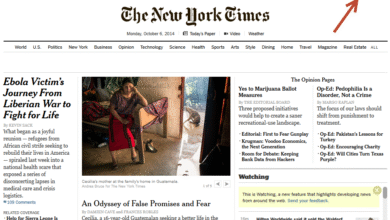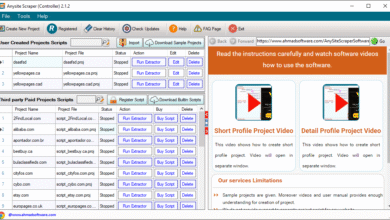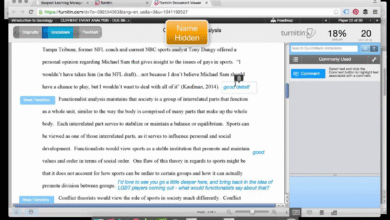The right scraping tools can make a significant difference in your ability to effectively extract data from web pages. Popular tools such as Beautiful Soup, Scrapy, and Selenium offer different functionalities to suit various scraping needs. Beautiful Soup is particularly useful for parsing HTML and XML documents, while Scrapy is a more comprehensive framework that allows for real-time data extraction and processing using spiders to navigate websites.
When selecting a scraping tool, it’s essential to consider the type of data extraction methods that fit your project requirements. For instance, if you need to interact with dynamic web pages, Selenium can automate browser actions, while static content can often be scraped effectively with Beautiful Soup. Moreover, incorporating libraries such as Requests for HTTP requests can simplify the extraction process by providing a streamlined method to access web content.
Data extraction methods vary significantly based on the nature of the target content. For instance, static websites can be scraped using traditional HTML parsing techniques, which involve fetching the HTML document and extracting data directly from the markup. Techniques like XPath and CSS selectors are instrumental in extracting specific pieces of information, allowing scalers to target and fetch specific data fields from within a web page.
On the other hand, for more dynamic content that relies on JavaScript to render data, tools like Selenium may be necessary. These extraction methods allow users to simulate user interactions within a web browser, enabling the capture of data that traditional parsers cannot reach. Understanding the distinction between these methods is vital for successful data scraping and can directly impact the quality and relevance of the extracted information.
Analyzing HTML is an indispensable part of any good web scraping project. It not only involves looking at the raw HTML code but understanding how the data is structured within the page. This requires familiarity with HTML tags and attributes, which is critical for identifying and isolating the data you wish to extract. For example, identifying the correct
or
tags can often lead you to the data points needed for your project.
During the analysis process, it’s also important to consider the uniformity of the HTML structure across various pages of a website. Consistency in HTML markup can greatly simplify the scraping process, while any discrepancies may require adjustments in your scraping logic. By using an approach that combines both analytical and technical skills, you can effectively develop robust scraping strategies tailored to the unique layouts of different websites.
Best Practices for Web Content Extraction
Implementing best practices in web content extraction can significantly enhance the efficiency and quality of your scraping activities. Firstly, always ensure that you respect a website’s robots.txt file, which indicates what content can be accessed by scrapers. Engaging in ethical scraping not only promotes proper web etiquette but can also prevent your IP from being blocked.
Additionally, using proper headers and slowing down your requests can help mimic normal user behavior, reducing the likelihood of being detected as a bot. By following these best practices, you can maintain the integrity of your scraping operations while ensuring that the data extracted is both reliable and relevant.
Challenges in HTML Scraping and Analysis
While HTML scraping offers many advantages for data collection, it also comes with inherent challenges. One major issue is the variability of HTML structures across different websites. Each website may present data in a unique way, which means that a scraping script that works for one site might not work for another. This necessitates continuous maintenance and adaptation of scraping code to cater to varying HTML structures.
Additionally, websites may implement anti-scraping techniques such as CAPTCHAs, rate limiting, and IP bans, complicating the extraction process. It’s crucial to develop strategies to mitigate these challenges, such as using rotating proxies and user-agent switching to disguise scraping activities and minimize detection.
Leveraging LSI for Enhanced Data Results
Latent Semantic Indexing (LSI) is an essential technique in enhancing the quality and relevance of scraped data. By understanding the context of the keywords used in the target content, LSI helps identify semantically related terms that may not be present in the original text. This allows for a richer and more comprehensive data set, as you can collect various nuances surrounding a particular topic.
Incorporating LSI in your scraping strategy involves analyzing the relationships between different keywords to ensure that your extracted data covers not just the primary terms but also relevant synonyms and related phrases. This approach can significantly increase the semantic value of the data, making it more useful for applications such as content creation, SEO optimization, and market research.
Building Robust Scraping Scripts with Python
Python is widely recognized as one of the most robust programming languages for building scraping scripts. Utilizing frameworks such as Scrapy or libraries like Beautiful Soup, developers can create efficient and powerful scraping tools. Python’s syntax is user-friendly, making it an ideal choice for both beginners and advanced users. It also has extensive documentation and community support, which simplifies the learning curve for those new to web scraping.
When building scraping scripts, it’s important to handle exceptions and errors gracefully. This includes setting timeouts, handling HTTP errors, and implementing retries for failed requests. By incorporating these elements into your script, you ensure greater reliability in your data extraction process, which is crucial for obtaining accurate and complete datasets.
The Future of HTML Scraping and Data Extraction
As technology advances, the future of HTML scraping and data extraction will likely see significant improvements. Innovations in machine learning and artificial intelligence are opening new avenues for automating the scraping process and enhancing the quality of extracted data. These technologies can help better understand web structures and user behaviors, enabling more efficient scraping strategies that adapt to changes in HTML layouts.
Moreover, as web technologies evolve, there will be a greater push towards the use of APIs for data access, which can simplify the data extraction process and reduce reliance on traditional scraping methods. This shift will further refine the field, encouraging developers to focus on sophisticated data analysis rather than just collection, thereby enhancing the business intelligence capabilities derived from web-sourced data.
Frequently Asked Questions
What is HTML content analysis and how can it improve data extraction methods?
HTML content analysis is the process of examining web page HTML code to extract valuable information. This analysis helps improve data extraction methods by identifying relevant patterns and structures within the HTML. By understanding how to analyze HTML, you can efficiently gather information from web pages, which is critical for tasks like content scraping and web content extraction.
How do I perform HTML scraping using popular scraping tools?
To perform HTML scraping, you can use popular scraping tools such as Beautiful Soup, Scrapy, or Selenium. These tools allow you to navigate the HTML structure of a webpage and extract specific data efficiently. A basic HTML scraping tutorial would include setting up the tool, identifying the HTML tags containing your target data, and using the tool’s methods to extract and store that information.
Can you explain how to analyze HTML effectively for web content extraction?
To analyze HTML effectively for web content extraction, start by inspecting the web page with your browser’s developer tools. Look for patterns in the HTML structure, such as tags and classes that enclose the data you want. Understanding CSS selectors can enhance your efficiency in pinpointing these elements, allowing for more precise extraction of content without unnecessary data.
What are some common data extraction methods used in HTML content analysis?
Common data extraction methods include DOM parsing, regular expressions, and using scraping libraries. DOM parsing allows you to traverse the HTML elements easily, while regular expressions can be used for quick text matching. Employing libraries such as Beautiful Soup simplifies the task of HTML scraping by providing tools to navigate and search through the HTML content.
What challenges might I face when analyzing HTML content for web scraping?
Challenges in analyzing HTML content for web scraping include dealing with dynamically loaded content, complex HTML structures, and anti-scraping measures implemented by websites. Websites that use JavaScript to load content will require tools like Selenium that can interact with the page after it has been fully rendered, while anti-scraping measures may necessitate the use of IP rotation and user-agent switching to avoid detection.
How can I ensure my HTML content analysis complies with web scraping ethics?
To ensure that your HTML content analysis complies with web scraping ethics, always check a website’s robots.txt file to understand what content can be scraped. Additionally, respect the website’s terms of service, avoid overwhelming servers with rapid requests, and consider using APIs provided by the site if available for data extraction.
| Key Point |
Details |
| Access Limitations |
Unable to directly access or scrape external websites. |
| Content Requirement |
Specific HTML content or details must be provided for analysis. |
| Assistance Offered |
Can help extract information from provided HTML content. |
Summary
HTML content analysis is essential for understanding how to effectively extract and utilize information from web pages. The inability to scrape external sites like nytimes.com highlights the necessity of receiving specific content directly from users for analysis. By providing the required HTML, users can receive tailored assistance to extract meaningful insights and information.





